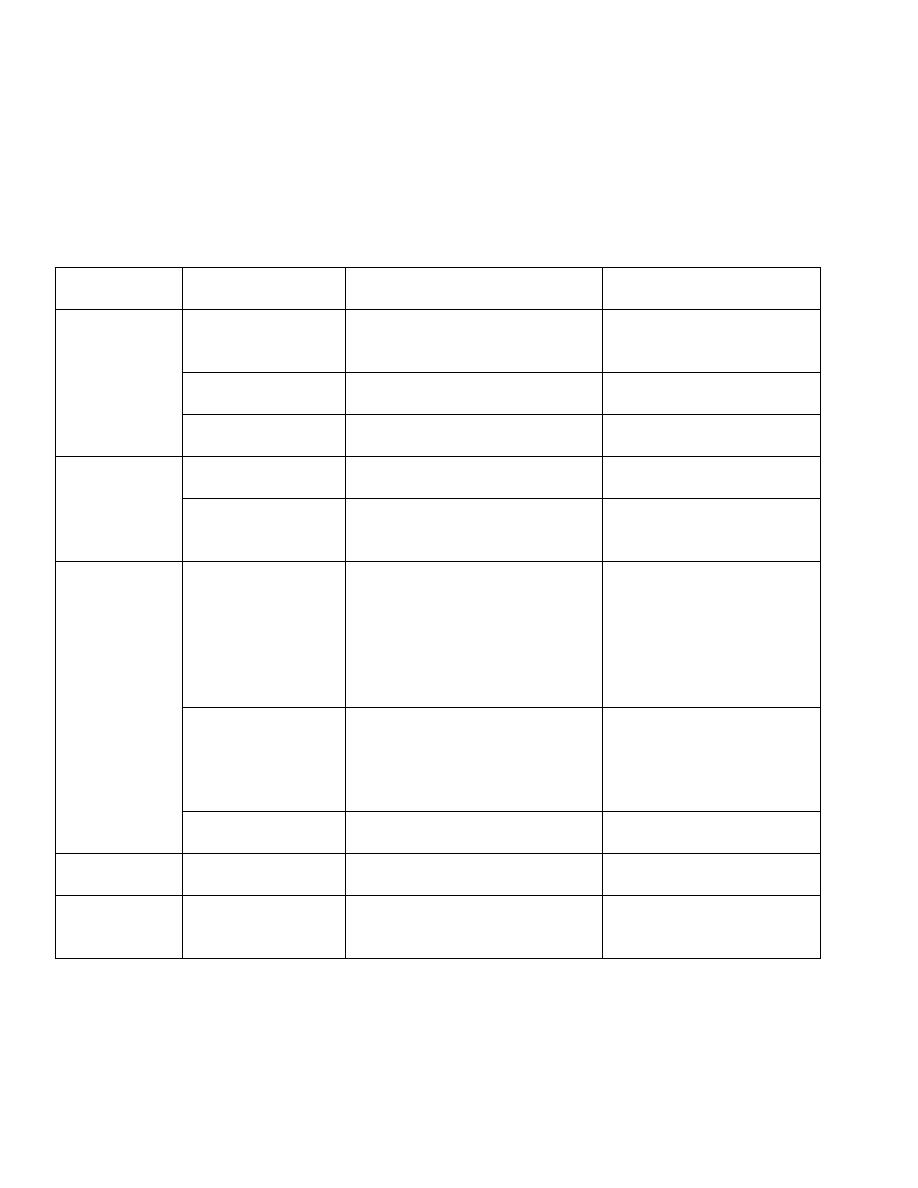
1
TREATMENT OF INFAMMATORY BOWEL SYNDROM
:-
This group of diseases include some diseases like ulcerative colitis & crohn
,
s disease .such
disease treated with one or combination of following agents 1- corticosteroid ,2- immune-
suppressive agents , 3- salicylate derivatives .
A-5-amino-salicylate derivative like (sulfasalazine ):
it is an anti-inflammatory agent , act by inhibit arachidonic acid pathway (PG &
leukotrienes ) , also act as free radical scavenger .
-----5-amino-salicylatic acid can not take orally in sufficient dose without excessive GIT
irritation & systemic toxicity to produce useful effect in colon , so sulfasalazine a poor small
intestinal absorbed agent is a combine of sulfapyridine with 5- amino-salicylic acid linked to
each other via azo bridge , sulfapyridine [act as vehicle to deliver 5-aminosalicylic acid to
colon & of no therapeutic effect ,I end via absorption into liver where it acetylated to be
excrete into urine ] , bacterial flora of distal ileum broken azo bridge to make release of 5-
amino-salicylic acid
-----this drug consider as disease modifying agent , more effective in maintaining remission
state of disease than at acute presentation of disease (achieving clinical remission ), their dose
3-4 g/day in divided doses then 2 g/day use to maintain remission .
-----their adverse effects are [ nausea , malaise , abdominal discomfort , headache ( can be
reduce by starting with small dose or using enteric coated form or using of liquid suspension
preparation ) inhibit folic acid absorption , vertigo , tinnitus , rash & hemolytic anemia] , their
precaution in use as in case of hepatic or renal disease , G6PD deficiency & person with
history of sulfonamide allergy .
----- other form of 5-amino-salicylic acid that use as topical (retention enema) that may use
as prophylaxis against recurrence in patient achieve remission .
-----other form of 5-amino-salicylic acid derivatives like :-
1- mesalamine –also contain a molecule of 5-amino-salicylate use in active colitis ,well
tolerated .
2-olsalazine contain 2 molecules of 5-amino-sal;iclic acid that bind via diazo bond use for
remission maintenance well tolerated & may cause watery diarrhea .
3- balsalazide an investigational agent linked 5-amino-salicylic acid to an inert carrier via
diazo bond .
B-IMMUNO-SUPRESSION AGENTS :-
Corticosteroid( hydrocortisone or prednisolone) that act to reduce inflammation , use
(orally ,topically or parenterally) , it not alter basic disease process , if use topically as enema
for prolong period it may cause systemic effects as oral form , tixocortol pivate(of some
anti-inflammatory effects with no systemic effects) .
--cytotoxic drug like azathioprine & mercaptopurine used more often in inflammatory
bowel syndrome , they more effective than corticosteroid at relatively low doses ,(start by 0.5
mg/kg/day 1.5mg/kg/day ), but may cause or lead to pancreatitis .
----cyclosporine use in case of sever refractory disease but their toxicity limit their
application .
----infliximab(monoclonal antibody) directed to TNF-α (protein produce by crohns disease )
intialy infliximab bond to TNF-α on a single infusion of infliximab 5 mg /kg which is

2
effective to produce remission , it is well tolerated , their side effects are( nausea , increase
frequency of infection) , it is very expensive 2000 dollars for a single infusion .
C- constipating drugs & anti-spasmodic agents
:-
To control the diarrhea while drug like atropine use to decrease cramps &urgency in
ulcerative colitis .
D- alosetron
(investigational drug) it is a 5-HT3 blocker agent , use to reduce symptoms.
-----------------------------------------------------------------------------------
Medications Used in the Management of Irritable Bowel Syndrome
Predominant
symptom
Medications
Dosage
Comment
Diarrhea
Loperamide
(Imodium)
2 to 4 mg up to four times a
day
Use as needed or
prophylactically in times
of anticipated stress
Cholestyramine
(Questran)
4 g one to six times a day
Second-line agent
Alosetron
1 mg per day titrated to two
times a day if tolerated
Restricted use in female
patients only
Constipation
Fiber
Start low and titrate up to 20
to 30 g a day
May worsen bloating
Osmotic laxative
Magnesium citrate, lactulose,
or polyethylene glycol dosed
as appropriate
Abdominal
pain
Antispasmodics
and
anticholinergics
(e.g., dicyclomine
[Bentyl],
hyoscyamine
[Levsin])
Dicyclomine, 10 to 20 mg, two
to four times a day
Used as needed only
Tricyclic
antidepressant
(e.g., amitriptyline
[Elavil])
Start amitriptyline, 10 to 25
mg at bedtime or twice daily,
or desipramine (Norpramin),
50 mg three times a day
Needs to be given daily,
not as needed, therefore
generally reserved for
patients with more
severe pain
Tegaserod
(Zelnorm)
FDA approved for short-
term treatment of women
Gas or
bloating
Simethicone
(Mylanta)
40 to 125 mg up to four times
a day as needed
Anecdotal evidence only
Comorbid
depression or
anxiety
Antidepressants
or anxiolytics as
indicated
Dose as appropriate
Treating depression has
been shown to improve
bowel symptoms

3
LAXATIVES AGENTS
:-
It is an agents that used to treat constipation (hard stool or no stool & even no flatus for more
than 3 days ), their indication are 1- when straining is dangerous as in angina / 2- in case of
painful condition as in anal fissure / 3- drug induce constipation as a side effects like opioid ,
anti-cholinergic & sedative agents / 4-prior to GIT surgery or endoscopy or radiological
examination . abuses of laxative may lead or cause hypokalaemia , atonic colon , mal-
absorption & dependence . constipation in infant treated by using sugar containing milk or
diet . drugs group used as laxative include :-
A- irritants or stimulants agents
:
This group of agent act by increasing intestinal motility by stimulating sensory nerve ending
in the colon , it cause intestinal; colic & on chronic use lead to atony of colon &
hypokalaemia . it is not use in following condition a-children/ b-pregnancy /c-intestinal
obstruction . their indication are a-constipation /b-prior to surgery or examination by x-ray .
This group include following agents :
1-caster oil : it is hydrolyze in upper small intestine into ricinoleic acid ( a local irritant) that
cause increasing intestinal motility & decrease fluid absorption . its onset of action is promote
& their effect continue till compound excreted via colon , it cause soft stool or fluid stool
within 2-6 hours , should be give on an empty stomach , with milk or fruit juice .
2-biscodyl & phenolphthalein : chemically similar to each other & they consider as a potent
colonic stimulants agent , the effect prolong by entero-hepatic circulation .
---biscodyl of direct action as stimulant of sensory nerve ending from lumen orally or as
suppository (Na
+
picosulphate) , their onset of action within 10-12 hours if use as tablet(tablet
of 5 mg in dose of 5-10 mg at night ) & within 1 hour if use as suppository .
3-cascara, senna & aloes [contain emodin alkaloid ] , it liberated after absorption from
intestine to excrete into colon , their onset of action delay up to 6-8 hours , the dose opf senna
1-3 tablets at night (12 mg tablet) & in children 1-12 year as 1 tablet at night .
…………………………………………
B- bulking laxatives
:-
They act by increasing volume & decrease viscosity of intestinal content , consist of
hydrophilic colloid or indigestive vegetables fiber & promote large soft stool by holding
water in bowel lumen . their indication are a-constipation due to in-adequate dietary fiber
ingestion , / b-painful anal condition fissure & hemorrhoids / c-in managing patient with
ileostomy or colostomy .
---- using of bulk laxative need the patient to take enough amount of fluid to avoid intestinal
obstruction . their contra-indication are a- atony colon / b-faecal impaction / c-intestinal
obstruction . their agents include :
a-hydrophilic colloids which prepare from indigestive part of fruit or vegetable or seeds ,
they form a gel in the intestine & stimulate its peristalsis activities .
b-methylcellulose(as tablets of 250 mg to be use as 1-4 tablets chewed three times a day & in
children 1-2 tablets 3-4 times a day , solution , granules ) , agar & psyllium all act in the same
way .
c-bran as tablet of 2 g in dose of 8-24 g a day in divide doses .

4
d-saline cathartics like [Mg+2 citrate & Mg(OH)2 & Mg sulphate] also destended bowel
& stimulate its contraction , non absorbable salts , they holding water in intestine by osmotic
force leading to their distension . Mg sulphate use in dose of 5-10 mg + 100-200 ml of water
before breakfast .
e-lactulose : it is a synthetic disaccharide (galatose- fructose ) that is not absorbed , thus they
act as an osmotic laxative when give in dose of 10-20 g up to 4 times a day .
f-sorbitol : non-absorbable agent give in dose of 15-30 ml solution once or twice a day , can
be effective if use three times a week .
…………………………………………..
C-stool softeners
:-
It is an agent that become emulsified with the stool serve to soften & make passage easier .
like:
a- liquid paraffin which act by lubricating feces & use in patient with anal fissure &
hemorrhoid , on prolong uses can cause 1-lipoid pneumonia / 2- impair absorption of fats
soluble vitamins , /3-irritation /4-granulomatous reaction .
It is use in dose 10-30 ml when needed .
b-surface acting agent [dioctyl-sodium sulphosuccinate , docusate sodium dioctyl 1 &
poloxamens ] soften feces by lowering the surface tension of fluid in the bowel leading to
allows more water to remain in the feces .they often combine with stimulant laxative in a
capsules , example biscodyl +docusate , they not use with paraffin since it may increase
paraffin absorption .
……………………………………………………..
D- osmotic laxatives
:- like
a-manitol 10 % &20% can be give orally , it not absoebed via GIT , & promot fluif stool by
osmotic effect , can be use to prepare patient for operation or endoscopy examination or for
radiological examination .
b- Mg
+2
sulphate , Na
+1
sylphate & Na
+1
-K
+1
tarterate .
……………………………………………………
E- rectally administration laxatives
:-
Glycerine & biscodyl as suppository to soften impacted stool , biscodyl also use to evacuate
bowel prior to suegery , x-ray , endoscopy examination . biscodyl as suppository 10 mg for
adults & 5 mg for children , inserted in about 20-30 min prior to evacuated requirement &
etc .
